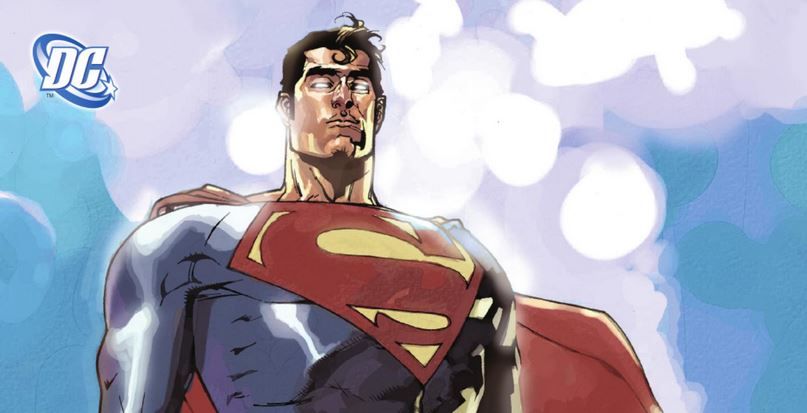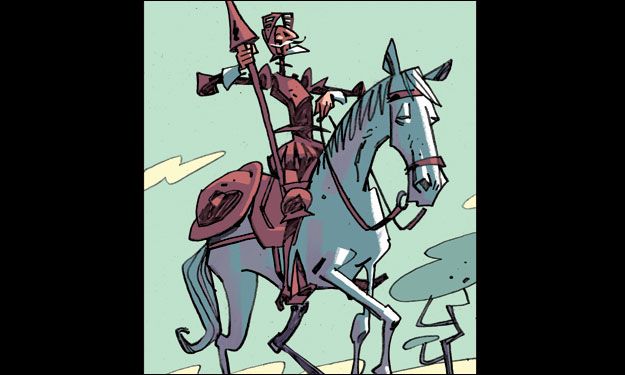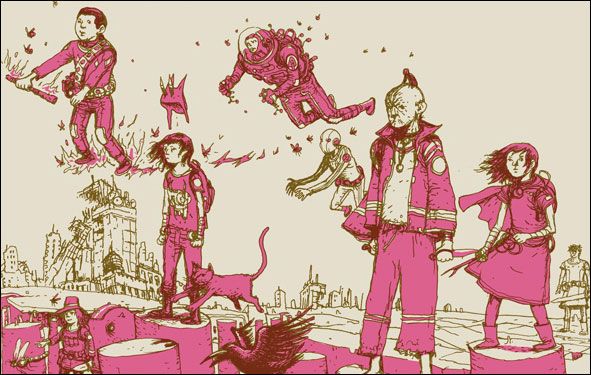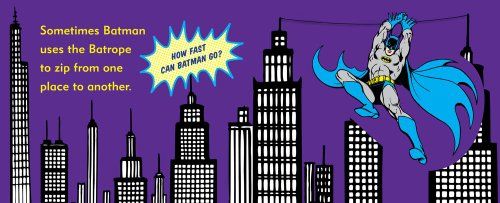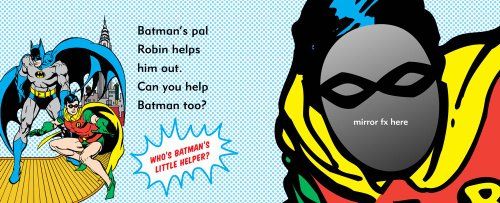Hello and welcome to What Are You Reading? To see what the Robot 6 crew has been reading lately, click below.
*****
Tom Bondurant
It was an early-'90s essay from Mark Waid that first alerted me to the sublime pleasures of Elongated Man comics. Basically, Waid pointed out that only in comics -- and, if memory serves, only in Silver Age superhero comics -- could a gangster spot an elongated ear extended down a chimney and exclaim, "An ear in the fireplace! He must be on the roof!" (As opposed to, you know, recoiling in horror, questioning his senses and/or his grip on sanity, that kind of thing.) Those famous phrases come from "Ten Miles To Nowhere," the first Elongated Man backup story in Detective Comics #327 (May 1964), written by Gardner Fox and drawn by Carmine Infantino, which I read as part of Showcase Presents The Elongated Man Volume 1. I mention the collection because it showed me just how good Infantino was when he inked himself. See, to this point Ralph Dibny had appeared only as a guest-star in The Flash, which was pencilled by Infantino but inked by someone like Joe Giella, Murphy Anderson, or Sid Greene. Not that they were bad inkers -- far from it -- but Infantino's inks were significantly different. His lines are tighter and his figures are more expressive, and his backgrounds are sometimes just breathtaking. The woodsy establishing shots in "Ten Miles" are so beautifully realized, I just want to start showing them to whomever's around. (You can see them here, along with more Infantino goodness, thanks to our pal Brian Cronin.)
Speaking of Waid, to prepare for the Man of Steel movie I've started re-reading Superman: Birthright (pencilled by Leinil Yu and inked by Gerry Alanguilan). It begins with Clark in Africa, reporting on modern tribal politics and trying to stop one faction from assassinating the leader he's covering. Some of the foreshadowing threatens to be heavy-handed -- lots of talk about honoring one's home culture, plus a little bit about how Clark thinks masks make people distrust you -- but Waid, Yu, and Alanguilan end up telling a very neat proto-Superman vignette which hits on a number of classic character elements. It shows how valuable Clark's journalistic skills can be, it demonstrates that even he can't be everywhere at once, and it even lays the foundation for his attraction to Lois Lane. A bridging sequence in Smallville (focusing on setting up the dual identity) brings many of these elements together while offering insights into both Krypton and the Kents. (Now I'm especially curious to see if the movie takes a similar approach to Jonathan Kent.) Ever since it came out, I've thought Birthright was an excellent standalone Superman origin, so I'm looking forward to comparing and contrasting with what's on the big screen.
Finally, of course I read Marvel's Battlestar Galactica comics as a kid, and I have most of 'em, but only recently have I put together a complete set. The first five issues adapt the first five hours of the series -- the three-hour pilot and the subsequent two-parter -- but after that Marvel went off on its own. I haven't gotten that far yet, just through issue #4, but that's enough to comment on the change in artistic teams. Ernie Colon drew the first three issues (produced originally in one big Marvel Super Special), but he didn't have anything filmed to use for reference, just things like costumes and miniatures. Therefore, while the spaceships and other accoutrement are recognizable, and the characters pretty much resemble their actors, Colon's art is very kinetic, even emotional. This is especially true for Apollo, who at times seems ready for a nervous breakdown. By contrast, Adama is stalwart and Starbuck is almost calculating. It's not bad, but it takes some getting used to. The regular team of Walt Simonson on pencils and Klaus Janson on inks came aboard with issue #4, and they settled things down considerably. I suspect they weren't working under quite the same conditions as Colon was, but they definitely set the tone for what I expected a Galactica comic to be.
Mark Kardwell
I read The Complete Don Quixote, adapted from Cervantes by Rob Davis, published by Self Made Hero. Well, I quickly re-read the first half, then luxuriated in the second, which was new to me. As half of Hollywood (and the other half of Broadway) will tell ya, Cervantes' novel is famously unadaptable, and it's driven men like Orson Welles and Terry Gilliam mad trying. So how come Davis made it look so easy? I'd speculate that it's something to do with Davis' intelligence and taste, but it probably also has a lot to do with comics' flexibility as a medium. All the quicksilver expressiveness of poetry and prose, all the arresting power of the visual arts. Ultimately, it's the greatest storytelling form, and if we didn't believe that, none of us would be here doing what we do. And this is a helluva book.
JK Parkin
Wings for Wheels is a uniquely designed minicomic anthology made up of stories about Bruce Springsteen's music. The comic itself comes in a sleeve that looks like the cover to Born to Run, with the front cover of the comic looking like a record. It features six different stories, as well as some cool one-pagers, by Todd McArthur, Jen May, Jen Vaughn, Josh PM Frees and more. The standout for me was "Home is Where the Boss is," by the anthology's editor, Nomi Kane, which is about how music and certain songs become the soundtrack of your life. If you're a fan of The Boss, it's well worth your $6.
I got the first print collection of It Will All Hurt, Farel Dalrymple's Eisner-nominated webcomic over on the Study Group website. I'm a little mixed about reading this in print. On the one hand, Dalrymple's art looks awesome on the printed page; the "full color on high quality bright newsprint in an oversized 'Golden Age' format" really works to bring out the best in his watercolors. The pin-up pages in the back of various characters from the story kind of make me want to disassemble the book, put them in frames and hang them in my kid's room. However, I really enjoy the formatting on the web, as just scrolling down to read the story adds to the dreamlike element of it all. But hey, I'm willing to keep buying it in print if it means he'll keep making it.
Finally, speaking of my kid, he's the owner of My First Superman Book: Touch and Feel and My First Batman Book: Touch and Feel by David Katz. Of the two, Batman is more of a crowd-pleaser; even though in the Superman book you get to pet Krypto, it doesn't really compete with the "Batman on his Batrope" on the coolness factor:
This page, however, is probably the scariest thing I've seen in a Batman book in a long time:
I don't think anyone wants to see their kid in a Robin mask after what happened to the last Robin ...

